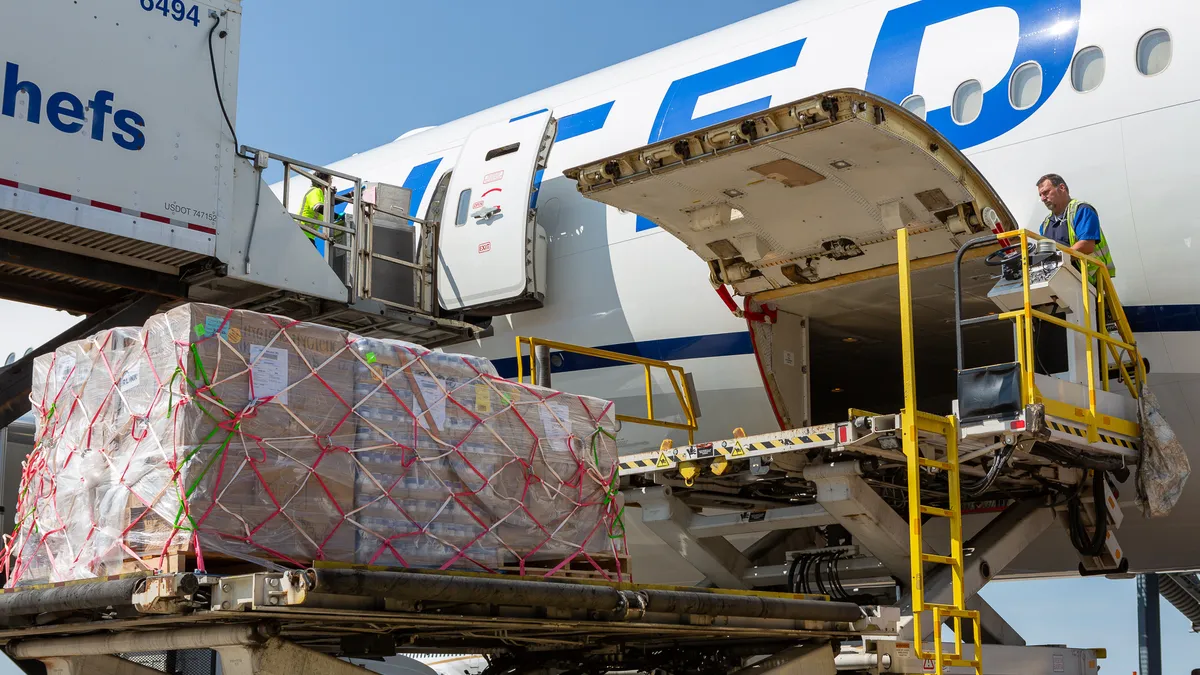Dive Brief:
- In response to the pandemic, fashion brands are consolidating their source base and focusing on strengthening relationships with key suppliers as they push to become more agile to demand shifts, according to the 2021 Fashion Industry Benchmarking Study.
- Out of the 31 fashion industry executives surveyed, 36.7% said they source from more than 10 countries or regions, down from 42.1% in 2020 and 57.1% in 2019. The trend is more common among companies with more than 1,000 employees, according to the study.
- But only 20% of respondents said their companies chose to source from either more or fewer countries during the pandemic. Instead, the study found companies are prioritizing closer relationships with their existing suppliers, with 83% of executives citing that as a pandemic-induced practice.
Fashion brands focus on close relationships, agility
Dive Insight:
During the pandemic, fashion brands frequently cited agility as a competitive advantage. They quickly realized suppliers played a pivotal role in building that advantage and helping the brands meet speed-to-market goals and keep costs under control.
Fashion brands faced elevated risks during the COVID-19 pandemic, with lockdowns affecting the supply of products (fewer workers at plants) and demand (fewer shoppers). In response, at the start of the pandemic, many brands canceled purchase orders from suppliers to manage their incoming inventory as demand receded.
A year later, fashion brands are more optimistic despite new outbreaks and supply chain disruptions. They're less worried about supplier-related disruptions, such as being short of workers, conducting audits or having too much stock, than they were about rising costs of goods and logistics risks, according to results of the 2021 Fashion Industry Benchmark Report.
The changing risks require fashion brands to think on their feet.
Harmit Singh, executive vice president and CFO of Levi Strauss, touted the brand's "agility to execute a playbook developed over the last year as conditions changed." The brand was able to recapture e-commerce sales, Singh said on earnings call in April, despite lockdowns in Europe closing one-third of the region's business footprint in Q1 2021.
Rising costs, logistics disruptions are top risks for 2021
The data reflects a paradigm shift in how fashion brands work with suppliers.
"I think somehow COVID creates these kind of new relationships or a new way of thinking: Really we are partners on the supply chain," said Sheng Lu, an associate professor at the University of Delaware's Department of Fashion and Apparel Studies, who conducted the study in collaboration with USFIA.
Whereas fashion brands' first reaction during the pandemic may have been to cancel excess orders, over time, companies began to see suppliers as enabling their push for agility.
One of the reasons for this is that some suppliers are "super vendors," according to Lu. They may not only have a factory in China, but also factories in Cambodia, Vietnam and Bangladesh. Because of this, suppliers can react more quickly to "non-economic factors" — such as lockdowns in one country, or closed borders elsewhere — to move products through the global supply chain.
And, by investing more deeply in relationships like these, fashion brands are able to lower the minimum lead times for purchase orders from three months to one month, as an example.
In December, the Dhaka Tribune reported the U.K. fashion e-tailer ASOS was working with a factory in Bangladesh on orders of as few as 300 products at time and requesting shorter lead times. For the suppliers, smaller batches can sometimes pay more, if they can shift their production techniques to meet the purchase order needs.
Lu said increased investment is not just about the purchase relationship. Some fashion brands are also working directly with suppliers to help them grow their production capacity, improve the quality of products or acquire new technologies. In fact, the 2021 study found an increased mention of virtual site visits, virtual quality assurance audits and 3D sampling, as a way companies increased agility as a result of the pandemic.
The traditional thinking is, "I have to keep so many vendors because I want to have the flexibility to switch to different vendors, but this is no longer the case," said Lu. "It's not just about the one audit, it's really about strengthening this relationship, making them [move] forward, strengthening and building trust, so we can eventually succeed in all domains."















